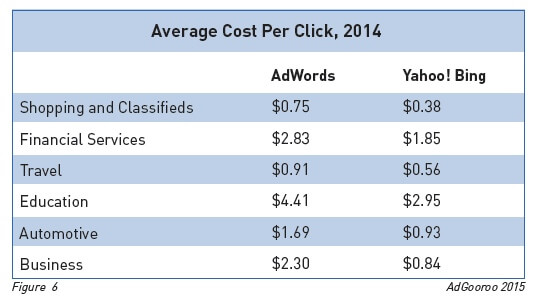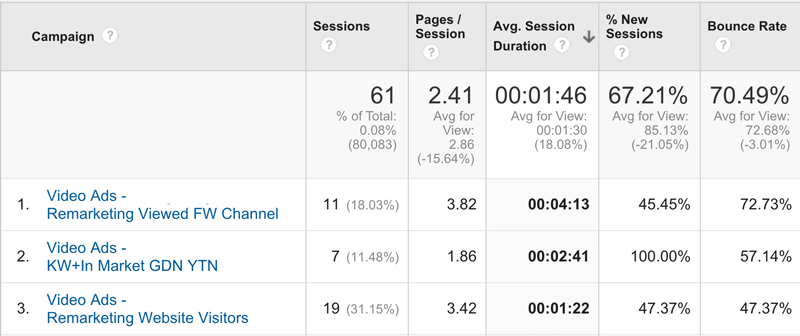Video Ads: Money For Nothin’ & Clicks For Cheap
If you're a paid search marketer looking for new avenues to explore, columnist Pauline Jakober urges you to take a look at video ads.
If you’ve been following the news around Google’s earnings, you know the company has been able to increase revenue coming from its advertising products despite the fact that it’s making less money per ad. Google has, in fact, been having a cost-per-click problem since the fourth quarter of 2011.
While many thought the problem was that Google was not able to monetize mobile (while others thought not), in April 2015, Google’s outgoing CFO confirmed it was not mobile, but YouTube’s TrueView ads that were the culprits.
The situation: a higher volume of TrueView ads were being watched by viewers, yet the cost per click (CPC) on those ads was much lower, or as Google’s then-CFO Patrick Pichette said, they “currently monetize at lower rates than ad clicks on Google.com.”
Fast-forward to the second quarter earnings call, and the new CFO echoed these findings exactly:
[blockquote cite=”Google CFO Ruth Porat”]CPC pricing on YouTube for TrueView ads, ads that users choose not to skip, is lower than on CPC pricing on desktop and mobile, but YouTube TrueView ads represented a larger percentage of our overall clicks, so had a greater impact on CPCs.[/blockquote]
So what does this mean for advertisers? Huge opportunity.
The YouTube Opportunity
We’re talking dirt-cheap clicks here, in some cases. Think $0.09 to $0.11 per click; at least that’s what we’ve seen on average for retail clients who are experimenting with TrueView ads. And Google announced this week that you’ll soon be able to manage these ads alongside all of your other AdWords campaigns.
Compare those prices with with what you’re seeing as an average CPC in your sector. As a benchmark, AdGooroo data from 2014 showed the average cost per click across six sectors was much higher than $0.11:
To give you a sense of the YouTube environment, both in terms of users and advertisers, here are some points Google’s Porat made on the latest earnings call:
- “YouTube… is showing strong momentum with users and advertisers as we reinvent the television experience for the digital age.”
- “On mobile alone, YouTube reaches more 18- to 49-year-olds in the US than any US cable network.”
- “Once users are in YouTube, they are spending more time per session watching videos; on mobile the average viewing session is now more than 40 minutes — up more than 50% year-over-year.”
- “The number of advertisers running video ads on YouTube is up more than 40% year-over-year and, for our top 100 advertisers, the average spend per advertiser is up over 60% year-over-year.”
[pullquote]CPC pricing on YouTube for TrueView ads, ads that users choose not to skip, is lower than CPC pricing on desktop and mobile…[/pullquote]
Set Goals, But Ensure They’re Realistic
But before you embark on the TrueView ads journey, there’s something important you need to do: set expectations. Yes, the clicks are cheap for now, but you’re also not going to see a flurry of direct sales (I’m talking to you, advertiser who spends $1 and makes $30 right away on the Search Network). That could change in the future, but for now, it’s what we’re seeing.
If that hasn’t scared you off from video ads yet, and you’re still interested in exploring, let’s talk about next steps and what to track.
The first thing you’ll want to figure out is if you have a budget for video ads. While the clicks are cheap, the production cost for high-quality video isn’t. Look at your paid search budget first; if your budget is $10,000 and you’re already spending that on the Search Network, then it might not be a good time for video ads (unless you can safely divert budget, but I’d always recommend to go where you’re getting return).
It’s a safer bet for marketers who have extra paid search budget and are trying to figure out where to put those dollars next. That’s when I would enthusiastically say that video ads are the place to be.
You want to start with a goal in mind. Maybe the goal of the ads is purely for branding and recognition, maybe it’s product-driven, or maybe the test is to see which types of video formats perform best.
The Performance Metrics
I can almost hear some of you now saying that PPC should not be used for brand-building, but in the case of video, it can be looked at a little differently. I like to think of video ads almost as part of your content marketing strategy: you may not see a direct return immediately, but over time, they can make an impact. With that in mind, set realistic expectations.
Next, you’re going to have to measure the things that show how well you’re doing against your goals. So let’s get a little more familiar with the metrics available to you.
One set of metrics is around the video itself. Things like engagement metrics can tell you how well the content and the ad are doing.
Here is what those metrics are telling us:
- Impressions: The number of times your video ads (any part of them) are shown
- Paid Views: The number of billable views your video ads had
- CPV (Cost Per View): Video ad equivalent for search text ads and Display Network ads, which are cost per click
- Earned Views: When a viewer watches additional video on your YouTube channel after watching the first one
- Earned Subscribers: When someone subscribes to your YouTube channel after watching one or more of your video ads
- Video Played To: The percentage of viewers who made it to 25 percent, 50 percent, 75 percent and 100 percent of your video
And if you’re curious, here’s how it works in terms of how views count toward your advertising budget (from the AdWords policy files):
[blockquote]Viewers can choose to skip the video ad after 5 seconds. If they choose not to skip the video ad, the YouTube video view count will be incremented when the viewer engages with the video ad or watches 30 seconds of the video ad (or the duration if it’s shorter than 30 seconds), or engages with your video, whichever comes first. Video interactions include clicks on the call-to-action overlays (CTAs), cards, and companion banners. If view counts are a major concern, it is recommended to make videos at least 12 seconds long.[/blockquote]
Another set of engagement metrics tells you how the people interacted with your site once they clicked through to your landing page.
What’s interesting here for this particular account was that the average session duration (aka time on site) is higher (especially for the first video campaign) compared to the site’s average. The pages per session are also very strong compared to the site’s average. Bounce rate is close to equal, or much better in some cases.
Keep in mind that only a small percentage of the total people who viewed the video actually click through to the site. However, the numbers we’re seeing further demonstrate the value of video ads; when clicking through, people are very interested in the product or brand.
Of course, you’ll also be able to see if conversions happened, just as you would expect when you have conversion tracking. Here’s another AdWords help file on measuring video ad performance, and here’s one more, which states:
[blockquote]You can use AdWords conversion tracking to track the number of people who click on a video ad and ultimately perform the desired conversion action. Since video advertising doesn’t always drive immediate conversions, we recommend that you look at view-through conversion data, which shows the number of online conversions that happened within 30 days after a viewer saw, but did not click, your video ad.[/blockquote]
So in closing, I would argue that the value video ads are bringing to the table is certainly up for interpretation, and while I wouldn’t recommend an all-in strategy, I would recommend video ads for businesses that are interested in trying new things, that have additional budget and that are ready to spend money outside of their current PPC program.
Finally, check out these tips from Google (YouTube) on how to create effective video ads for more information on the actual content of the video you’re creating.
So are you ready to try video ads? Let me know in the comments below.
Opinions expressed in this article are those of the guest author and not necessarily Search Engine Land. Staff authors are listed here.
Related stories



